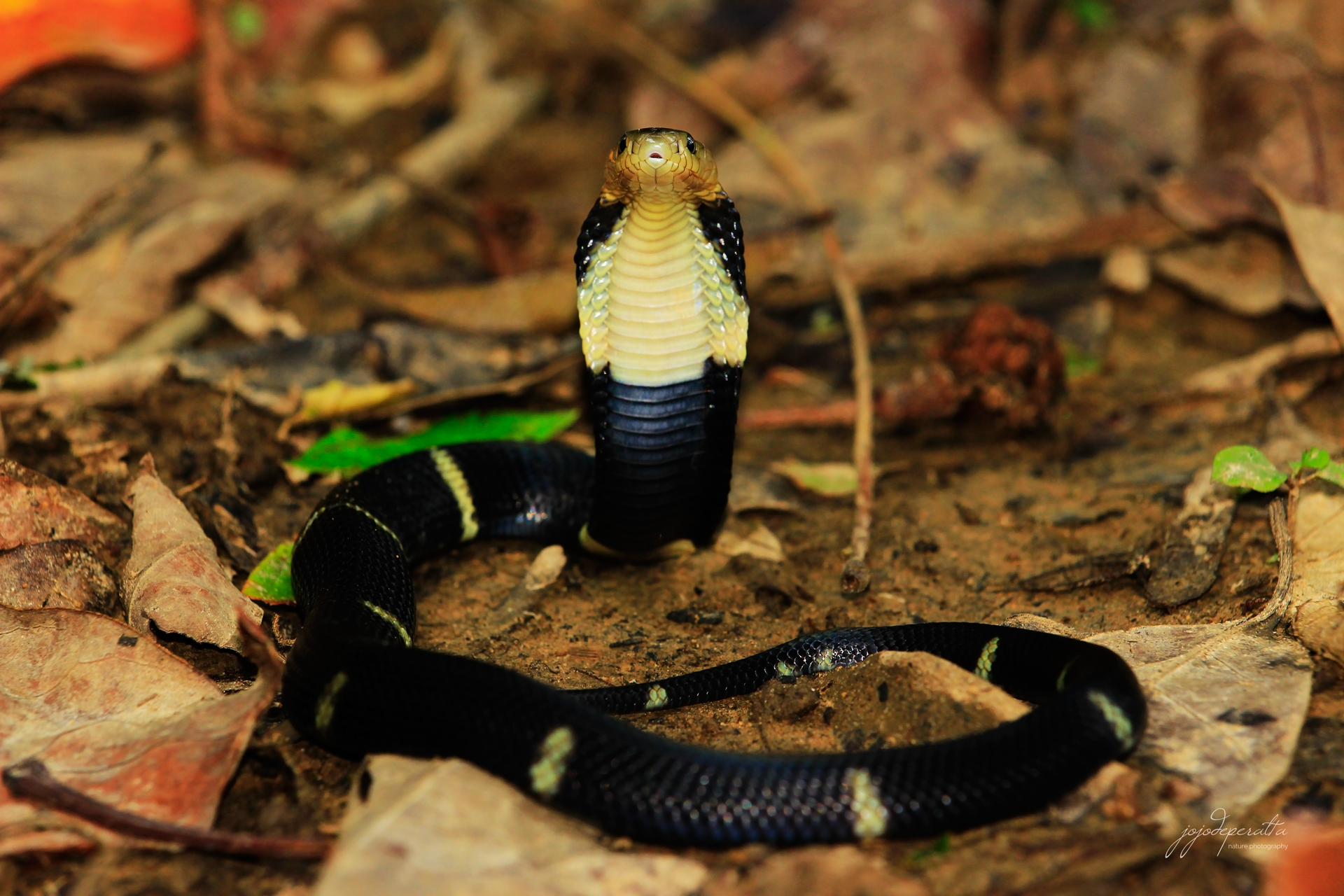Skip to main content
Two-lined Coral Snake

 |
| Two-lined Coral Snake |
This snake is believed to be one of the most venomous
snakes in Palawan forests. However, they are generally considered less
dangerous to humans than other venomous species because this snake have a
less effective venom-delivery system. The snake is rear-fanged and the
mouth is very small. Except on small parts of the human body like on the
edge of fingers or toes, it can be very difficult for this snake to get
its fangs under the human skin. There's only one coral snake bite victim
I know in the whole province, a Pala’wan tribesman in Sitio Itulus who
accidentally stepped on it and was bitten on the toe. He survived, but
he told me that he was in bed for several days, too weak to sit up
and suffering with headache and fever. The whole feet, he said, was
swollen and painful for days.
 |
| Two-lined Coral Snake |
The Two-lined Coral Snake has potent venom, but it is said that because of their small
size, these snakes don’t carry much venom in their fangs enough to cause
fatality to humans. Many locals believe it, but I do not. The fact that
its venom did not kill that poor tribesman doesn’t mean that its venom
is not fatal to all humans because not all human bodies have the same
reactions to different kinds of venom. A type of venom weak or
ineffective to others can be very dangerous to someone who is highly
allergic to it. I know a woman who died after being stung by a Paper Wasp
and a coral snake is more than a thousand times larger than this wasp.
There was a time that I never thought that wasp venom could be lethal to
humans because they're small and I have been stung by the same species
of wasp many times in the past. Being small means less venom, but it
doesn’t always mean less dangerous. Last 2018, I found out that I'm
highly allergic to scorpion venom and if I were not properly trained in
first aid and did not know what to do in that kind of situation, I may
not be here writing this blog today.
 |
| Two-lined Coral Snake |
This snake is small and too pretty
to look dangerous, but care should be taken seriously when handling and
photographing this species.












